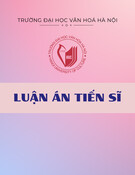
VIETNAM NATIONAL UNIVERSITY, HANOI
UNIVERSITY OF LANGUAGES AND INTERNATIONAL STUDIES
FACULTY OF POST-GRADUATE STUDIES
LÊ THỊ THÙY
A COMPARATIVE STUDY OF THE LEXICAL MEANS OF
MODALITY EMPLOYED IN CULTURE AND SPORT EDITORIALS
OF COMMENDATION ON THE USATODAY.COM AND
THE VIETNAMNEWS.VN FROM 2012 TO 2015
NGHIÊN CỨU SO SÁNH NHỮNG PHƢƠNG TIỆN TỪ VỰNG CỦA
TÍNH TÌNH THÁI TRONG CÁC BÀI XÃ LUẬN KHEN NGỢI VỀ
LĨNH VỰC VĂN HÓA VÀ THỂ THAO TRÊN BÁO USATODAY.COM
VÀ VIETNAMNEWS.VN TỪ NĂM 2012 ĐẾN 2015
M.A. Minor Thesis
Field: English linguistics
Code: 60220201
HANOI – 2016

VIETNAM NATIONAL UNIVERSITY, HANOI
UNIVERSITY OF LANGUAGES AND INTERNATIONAL STUDIES
FACULTY OF POST-GRADUATE STUDIES
LÊ THỊ THÙY
A COMPARATIVE STUDY OF THE LEXICAL MEANS OF
MODALITY EMPLOYED IN CULTURE AND SPORT EDITORIALS
OF COMMENDATION ON THE USATODAY.COM AND
THE VIETNAMNEWS.VN FROM 2012 TO 2015
NGHIÊN CỨU SO SÁNH NHỮNG PHƢƠNG TIỆN TỪ VỰNG CỦA
TÍNH TÌNH THÁI TRONG CÁC BÀI XÃ LUẬN KHEN NGỢI VỀ
LĨNH VỰC VĂN HÓA VÀ THỂ THAO TRÊN BÁO USATODAY.COM
VÀ VIETNAMNEWS.VN TỪ NĂM 2012 ĐẾN 2015
M.A. Minor Thesis
Field: English linguistics
Code: 60220201
Supervisor: Tô Thị Thu Hƣơng, Ph.D
HANOI – 2016

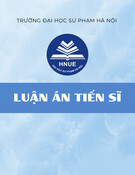
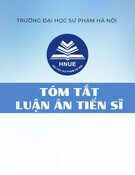
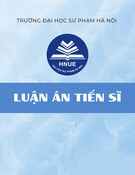


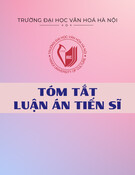
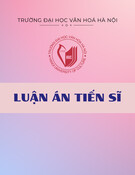
![Phát hiện và nhận dạng tiếng Việt trong ảnh CCCD, ảnh ngoại cảnh: Nghiên cứu phương pháp nâng cao độ chính xác [Luận án Tiến sĩ]](https://cdn.tailieu.vn/images/document/thumbnail/2025/20250807/vijiraiya/135x160/7691754555235.jpg)
